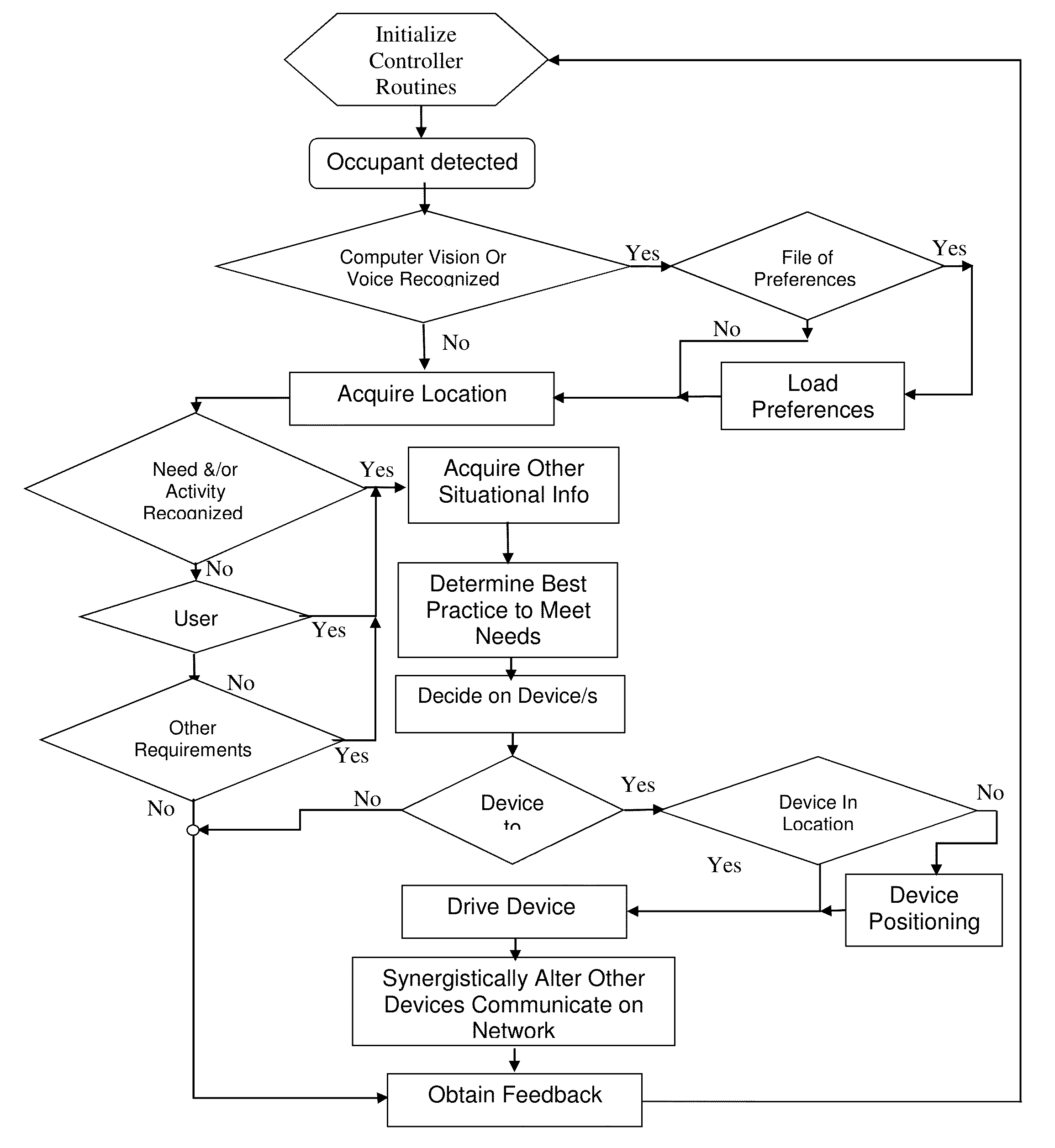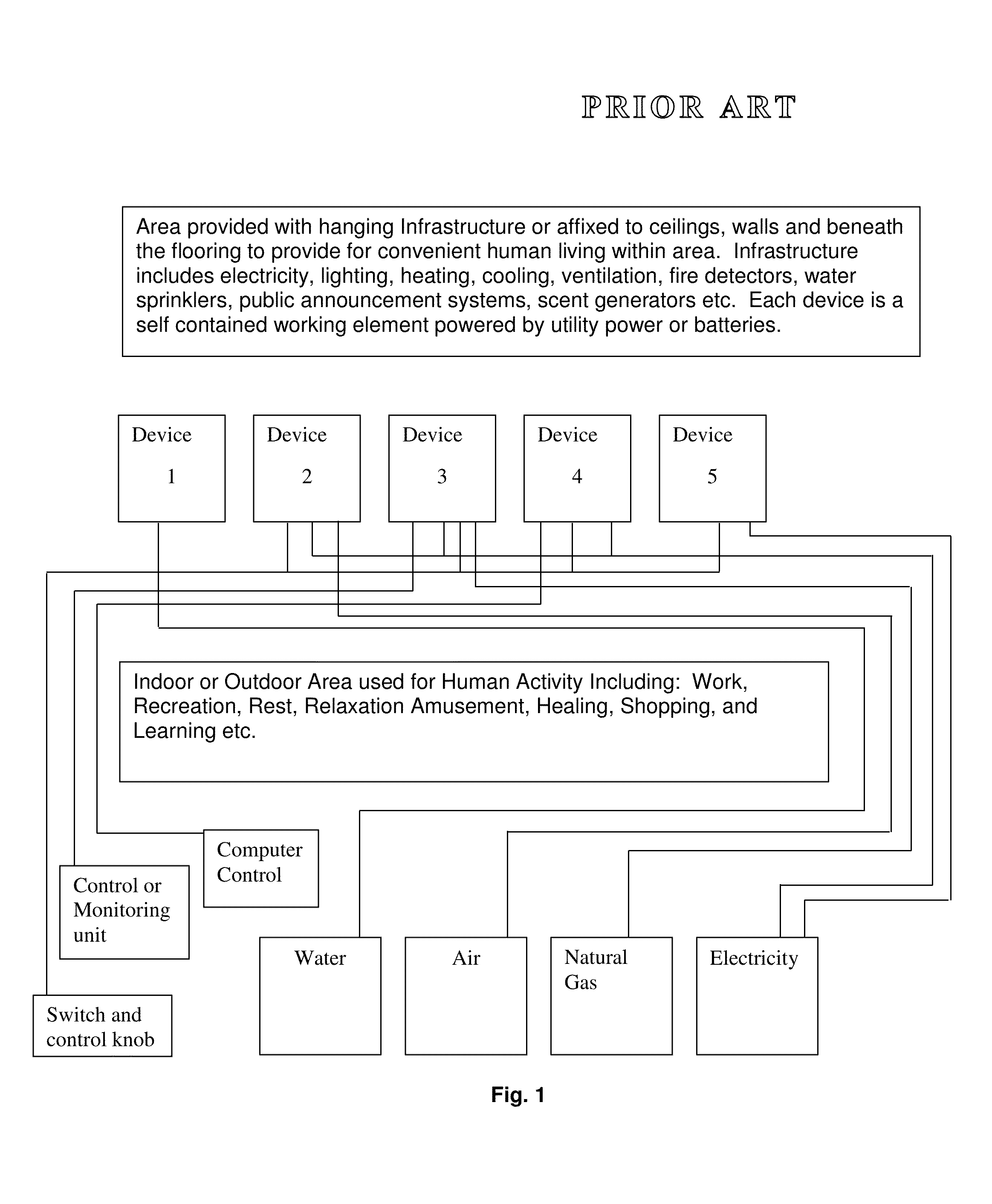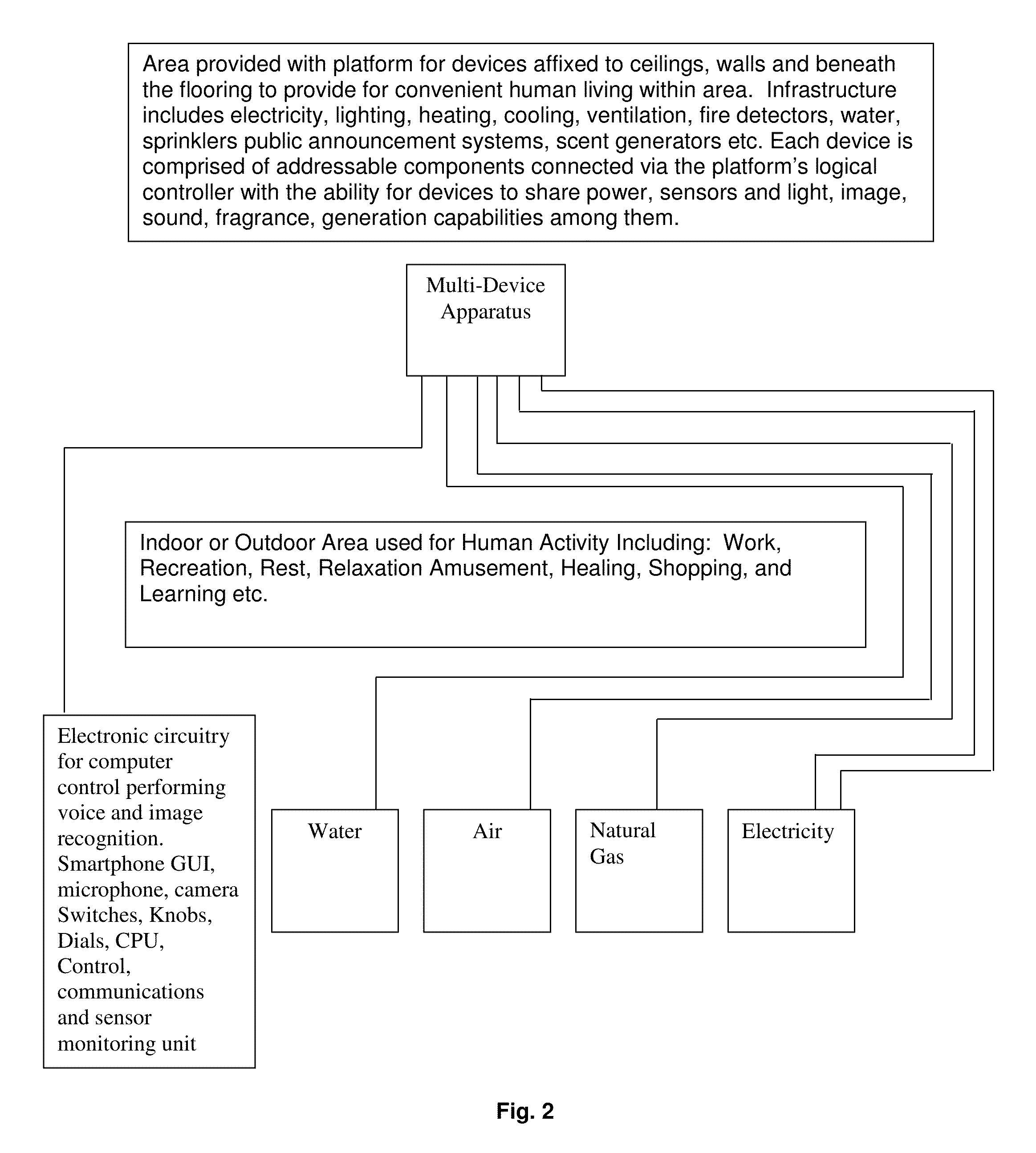Retailers go to great expense to bring shoppers in to their stores.
Stressors such as excessive heat, irritating
noise, or unpleasant aromas generate substantial levels of negative affect.
Besides, a
magnetic field may affect a human's body or spirit, but the effect has not been fully understood yet.
Odor also affects one's
mood; for example, an offensive smell may cause
nausea.
Numerous lamp types and luminaire styles exist for providing illumination and the variety is mind-boggling.
All however are governed by the optical limitations and require
electric power to operate.
Control of the
initiation and cessation of sensory experience resulting from conventional dispensing is very difficult.
While these patents combine lamps with fragrance generation this is not the preferred method since lamps must be replaced and these artifact make it difficult and also the heat is high on a lamp and can produce a fire.
It is evident that once the wick is exposed, there is no way to control the amount of material dispensed nor to easily adjust it or quantify it.
It can't conveniently be turned on and off.
None of the conventional devices for distributing
odor producing chemicals are subject to control or quantitative precision dispensing.
In general fragrances are expensive, difficult to dispense in the correct dosage and it would not be cost effective to provide scent to a large area.
Therefore a number of fragrance dispensers would need to be distributed over the area involving great expense at establishing the power and control infrastructure necessary for the correct and cost effective dispensing of the
aroma.
The scents preferred by the young teens wafting over to the shoe department don't generally match the taste of the elderly set.
In general the added systems and extra devices add
initial cost and contribute to the increasing logistics headache of the maintenance department.
Sounds may also positively or negatively affect one's feelings.
Other sounds may be perceived as irritating
noise, causing aggravation while noise such as
waves bring on relaxation.
Lighting, media and entertainment delivery devices for video and audio need their separate locations in the room and together with their power cords are adding to the
clutter in the room. FIG. 1 illustrates the lack of integration between the devices and the overall
system's difficulty in preventing interference from the effects of all the devices.
The plethora of individually installed devices necessary for so called increasing the
quality of life in a
living space, on the other hand
pose a maintenance-man's headache, are expensive to
mount, add complexity and aesthetically
clutter the space creating an eyesore.
However, each
system is an independent device so there is duplication of processors, communications, circuitry, power supplies and other components.
However, the Smartphone integration has essentially been limited to the control of virtual devices such as media which need not be distributed over an area.
Thus if in
retrofitting an offsite bakery outlet where the smell of fresh baked bread is to be artificially introduced, numerous scent dispensing devices would have to be hung, power would have to be brought to them and the ceiling expanse would become cluttered with numerous devices.
Another problem with using scent to effect emotion is that the person quickly gets used to the smell and no longer discerns the pleasing effects of the
odor.
A problem with fragrances but also with sound systems in a department store is that they are not tailored to the specific shopping area.
PA systems are very efficient at distributing sounds and messages however they are not customized to a specific area without the placement of a plethora of speakers throughout the store.
Thus a
lighting system hooked up automatically to music and a separate fragrance generator without supervision may generate parameters unhealthy to the people under its influence.
A problem with having to set up a
lighting system and its ensuing infrastructure dominates the
interior design scene especially in terms of the ceiling, light switches, which equipment is to be placed within the living area to make it
usable day and night.
Significant
engineering design and cost is involved with setting up lighting systems, their placement and double connection to the power once for power from the mains, a second time for on / off and even a third connection for diming control.
In addition without a central controller logically and operationally networking them together, one device is unaware of other and incapable of using its capabilities.
These sensors are single purpose and duplicative and are without a capability on calling on other devices to rectify other happenings within a
living space.
Another problem in general is that in present technology homes and offices there is a tendency heat / cool, provide sound or video and illuminate areas where no one is there to have benefit from it.
People could be overcooled in a
living space irrespective of the
thermostat's reading on the wall because state of the art wall thermostats monitor room parameters rather than the actual occupant's physiological parameters and in the approximation compromises on comfort and waste energy.
Presently, the devices used to deliver lighting, cooling, heating, water in
fire control sprinklers, sound, video, etc are incapable of delivering their energy or
mass confined to sub-areas within their coverage area.
Thus a fire in a corner of a room sets off a sprinkler which instead of only putting out the fire in the corner, produces
water damage to the rest of the room.
This
man machine interface often requires access to an
input device which may involve difficulty in finding it or it requires handling where
hands free operation may be more convenient.
The smart home intends to reduce the need to use the interface, however, the problem with smart home or
office automation is that it requires the user to set up rules as to how it will operate.
It is often inconvenient to take the time and forethought to tune the
system and there are always exceptions to the rule.
To correctly control all these different energy and entertainment systems is too much bother and the “smart” home has not gained wide market penetration.
Thus the majority of offices and homes are still not operated at optimal level.
Fewer points to be serviced by maintenance men who often have to erect costly and dangerous scaffolding to reach units.
 Login to View More
Login to View More  Login to View More
Login to View More 


